As an Amazon Associate I earn from qualifying purchases.
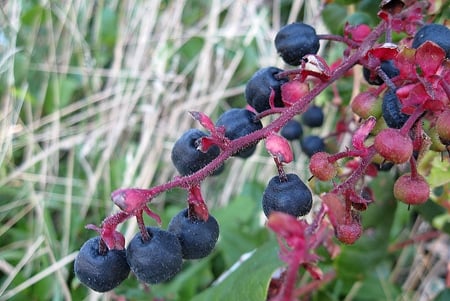
Know what these are? I didn’t either, at least until last week. They are salal berries, Gaultheria shallon. And I would have walked right past them had I not heard them calling my name.
Not literally — I’ve not yet resorted to talking to plants — but as I wandered around the Coastal Range foothills of Marin County, the sight of these odd-looking berries kept nagging me…
The reason I was in these hills was huckleberries, which are just now coming ripe. Huckleberries, specifically Vaccinium ovatum, are the West’s answer to the blueberry. Dark, tart, sweet orbs that have both a highbush and a low-bush habit; there are several varieties in the West. All are a pain in the ass to pick in quantity, but are worth the effort. Huckleberries are on everyone’s wild berry “A” list.
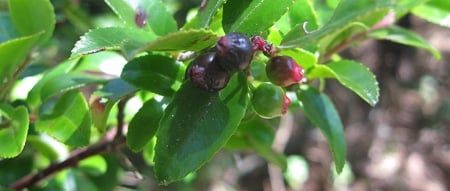
A friend (thanks, Amy!) told me where to find some, and sure enough, I found a cluster of California huckleberry bushes. Sadly, the reason I know they are just now coming ripe is because more than half the berries in the cluster were still bright red. Sigh. Guess I’ll just have to return in a week or so.
I did manage to pick a few cups of berries, however.
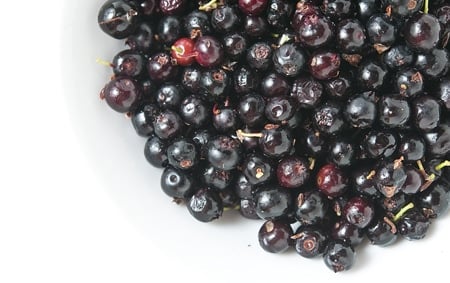
Not so much that I could make a full-on huckleberry pie, or enough to process into one of the many fruit syrups I make — well, I could have, but it probably would not have left me with enough berries leftover to make my favorite huckleberry/blueberry dish: Huckleberry muffins!

Now if you’ve been reading this space for any length of time, you know I am not a habitual baker, especially of sweet baked goods. I’ll take a juicy venison steak or some fried halibut over cakes and pies any day. But what that hell was I supposed to do with all these berries I’ve been collecting? Besides, muffins are easy. And good. If I start making sugar sculpture and working with fondant, come shoot me.
But Hank, um, well, weren’t you going to tell us about those freaky salal berries you mentioned a while ago? Yes, yes, but I needed to make those muffins first.
So I left my huckleberry patch in search of other bushes that might be more ripe, and kept walking past this rambling shrub with wide, leathery leaves and these funny-looking berries on them. I barely registered them as I searched for more huckleberries when I spied this:
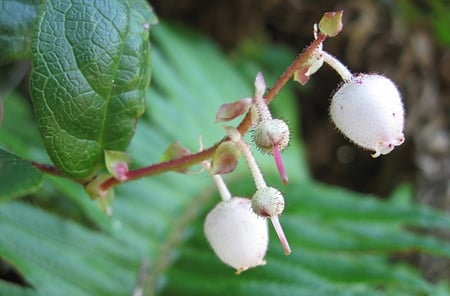
Whoa. That flower looks almost exactly like either a blueberry flower, or a manzanita flower. Both of those are edible… <wheels begin to turn> …Huh. Lemme look at these funky berries a little closer.
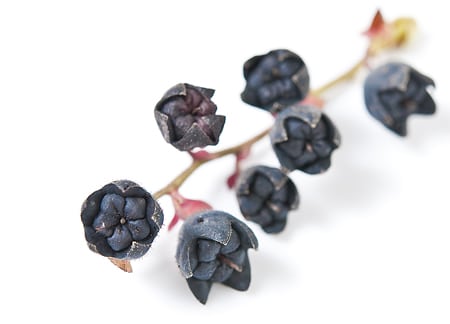
Bingo! These are definitely edible berries. How did I know? Hard to say, exactly, but I have something of an eidetic memory for images. I knew I’d seen that weird pattern on a blue berry in one of my many foraging books. But what was it, exactly?
Fortunately I’d packed along both the Edible and Useful Plants of California and the National Audubon Society’s Field Guide to California. Both books include salal. Not only was it edible, the books said, it was delicious. I ate a few. Good. Nice and sweet, but they lacked the tang of the huckleberries. Still, they were three times the size! I filled a plastic container with them.
Like the huckleberries, I’d not collected enough for a full-on pie, and salal pie is apparently what most people who collect them do with their salal berries. Holly and I didn’t want to eat a whole pie between the two of us, anyway, so I decided on a little mini pie in a ramekin.
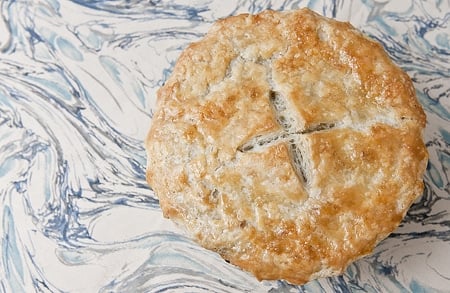
The crust is only on the top, and the berry filling cooks in the ramekin. I made these with four-inch ramekins, which were a little too big for one person — unless you really like sweets. A two-inch ramekin would be perfect for me. Keep in mind the recipe works with all sorts of berries: blueberries, huckleberries, blackberries, thimbleberries, etc.
What’s the lesson in all this? To keep your eyes open and your guidebooks handy when you are out in the field. No one has every edible plant memorized, but once you spend enough time reading them, you will begin to see and “hear” the signs edible plants give you — even if you’ve never seen the plant before. This looks like that, and well, maybe they’re in the same family. That sort of knowledge helps you find an unknown plant in a guidebook.
Had I remained locked into huckleberries tunnel vision, I would still have come home with enough for some muffins. But I would have missed out on an opportunity to taste something wholly new to me. And as good as those muffins were, that opportunity was better.
The salal pie wasn’t too shabby, either.
MORE ON HUCKLEBERRIES
- Heidi Swanson’s Maple Huckleberry Coffee Cake
- Huckleberry Ice Cream, from the Pie Lady
- Langdon Cook’s Halibut with Red Huckleberry Compote
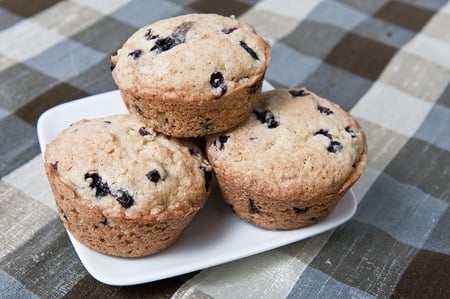
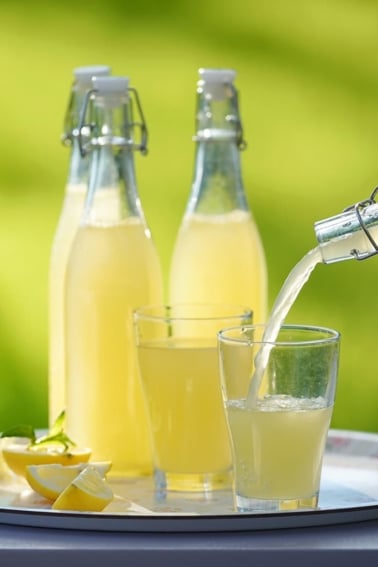
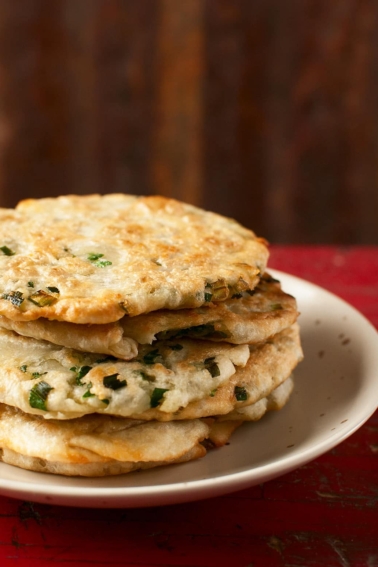

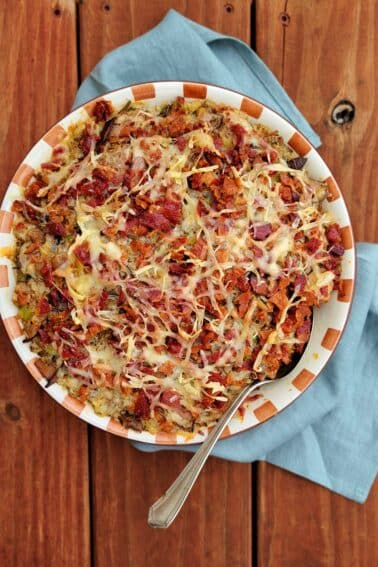
The twin harbors camp ground in western Washington is filled with salal. I had never seen so much salal in my life until I went camping there.
I grew up thinking these were poisonous. Is there any blue/black berry on Mendocino coast that I should avoid?
I was wondering if there are any books on different wild berries from Northern california and where they can be found?
Thank you so much for helping the kids and I properly identify the salal berries growing right down the road from us. We are going back for some more. Your article and pictures are a great resource!
Um, I just ate a heap of Salal berries in Oregon and they have a very fragrant flavor. The first taste is weaker than a Blueberry BUT the after flavor is a lot stronger than Blueberries. Over all they were hands down more flavorful than Blueberries, and I self pick those… So I’m a bit experienced.
I was curious about more information on them, particular anti-oxidant comp. and was surprised some people were saying they weren’t flavorful!
Is there such a thing as a wild berry picking map for northern california?
Lang – I live in the Sacramento valley, usually take a hike at the Sierra mtns. usually spot black berry bushes with no berries. however never spotted hucks.
Ok, so I am really glad your friend Amy knew about where to find these, but I am in the bay area, and am looking for them as well… Please direct me where to go! They cost $45 for 3 pounds if you buy them from Montana sellers- which you know I believe in supporting small businesses, but not with half my check! 😀 (Ok, exaggerating…) Still, where can I go? Do they grow in forests? Beach areas? What? Thanks bunches!
Amy from Livermore, CA
Mark: They are abundant from Marin to Del Norte. Just gotta find your patch! 😉
Hank,
I have lived in the Bay Area most of my life. Where did you find the huckleberries? I have found them growing abundantly in Oregon, but have never come across them in California.
Picked huckleberries, blackcaps, naitve blackberries, thimbleberries, wild strawberries and currants for years in Oregon. Salals are also good especially dried. I think the berries on the coast and the Sierrras is a different kind than the ones in the Cascades.
The berries that you’re calling huckleberries would be called blueberries in British Columbia. We save ‘huckleberry’ for their red relative (Vaccinium parvifolium, I think).
Salal berries are easy to find and quite palatable, but they’re not very flavourful. In fact they’re downright insipid (some sugar, no acid, just a generic ‘red/blue’ flavour).
Wow, just saw this post today.
Salal and huckleberries were favourite hiking berries growing up. They’re both extremely easy to find on Vancouver Island and you can usually find a patch or two befor ethe bears get them.
Out of curiousity – you picked blue huckleberries, do you have red as well? Reds grow almost everywhere back home, but I’ve only ever seen the blue at higher altitudes.
Jessa: I will need to return soon. I want a store of frozen huckleberries for the winter…
Lang: Thanks a heap for that tip! I will be back there once the rains come. It is a huge swath of salal.
Sarah: never seen juneberries here; that’s what we call Saskatoon berries in this part of the world. The same berry is called a shadberry in the East because when it blooms, the shad run up the local rivers.
Carol: I had no idea. But, um, is that a hint? I guess I do need to get Holly flowers one of these days. 😉
Perry: Another good mushroom hint! 100,000 thank0yous for that one, as I am inordinately fond of black trumpets.
Nate: You eat the whole berry.
Very pretty berry! Do you use the entire berry off the stem, or peel off the “petals”?
Nope, another berry that I’ve never heard of!! WOnderful! I also like the mini pie idea. Perfect for those end of season yields… little mini pies. They are not wasteful and you don’t feel like a great pig eating the whole thing!!
Nice haul! Remember where your huckleberry patches are, in winter you will probably find black chanterelles under them. Craterellus cornucopoides seem to have a mycorrhizal association with thim in the North Bay, especially in the coastal range.
Hank, maybe you know this already, but salal branches (sans berries) are widely used by florists as a green accent/filler in bouquets. Check it out the next time you buy Holly flowers!
I have yet to taste huckleberries. They also grow in British Columbia and are a favourite out there, as saskatoon berries are here, on the prairies.
The evergreen huck (V. ovatum) is the last of the huckleberries to ripen in my region and is often available as late as Thanksgiving for making a holiday pie. Have you tried the Sierras for mountain hucks–they should be ripe now. Good call on the salal, it’s a plant to know, especially because here in the PacNW chanterelles like to hide underneath the foliage!
We have an awesome huckleberry spot out in the Bay Area where they are fully ripe and are BOOMING this year – last week we picked a gallon in about an hour – I dried some, made some huckle-fig preserves (delicious!), and froze a bunch for sourdough-huckleberry pancakes.
We’re going up again in a few days for another haul.